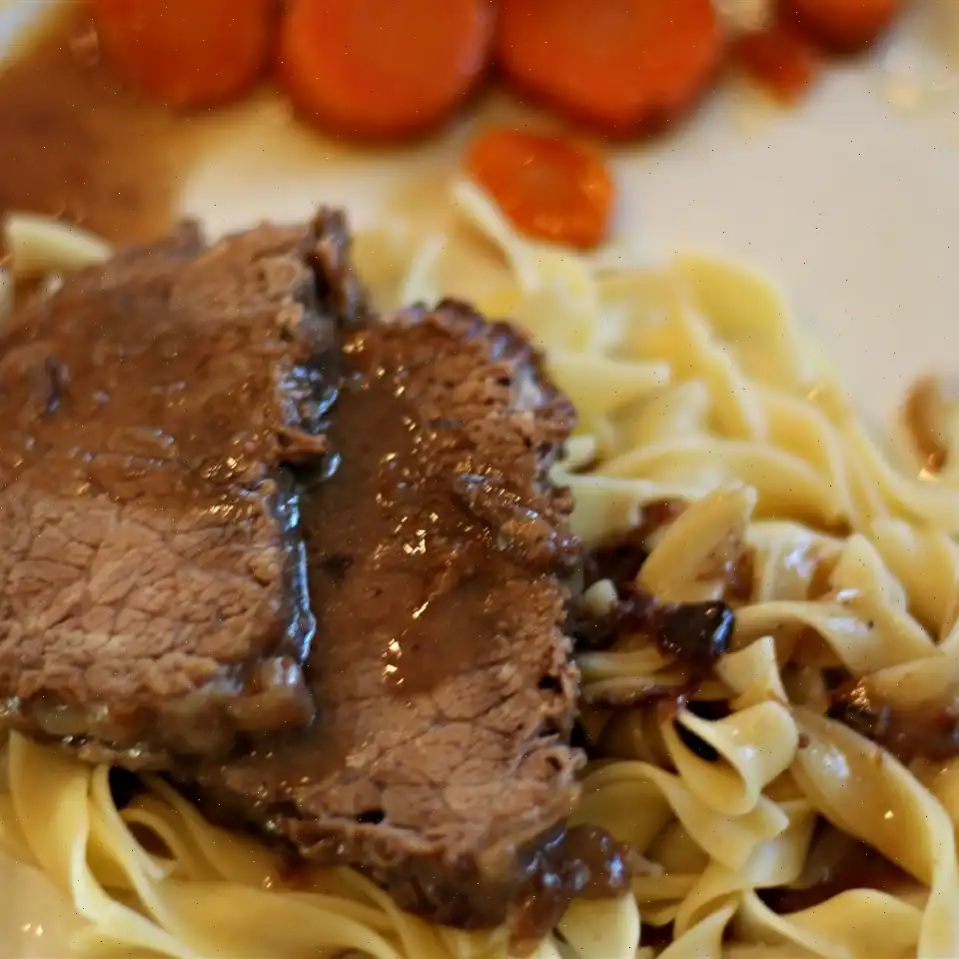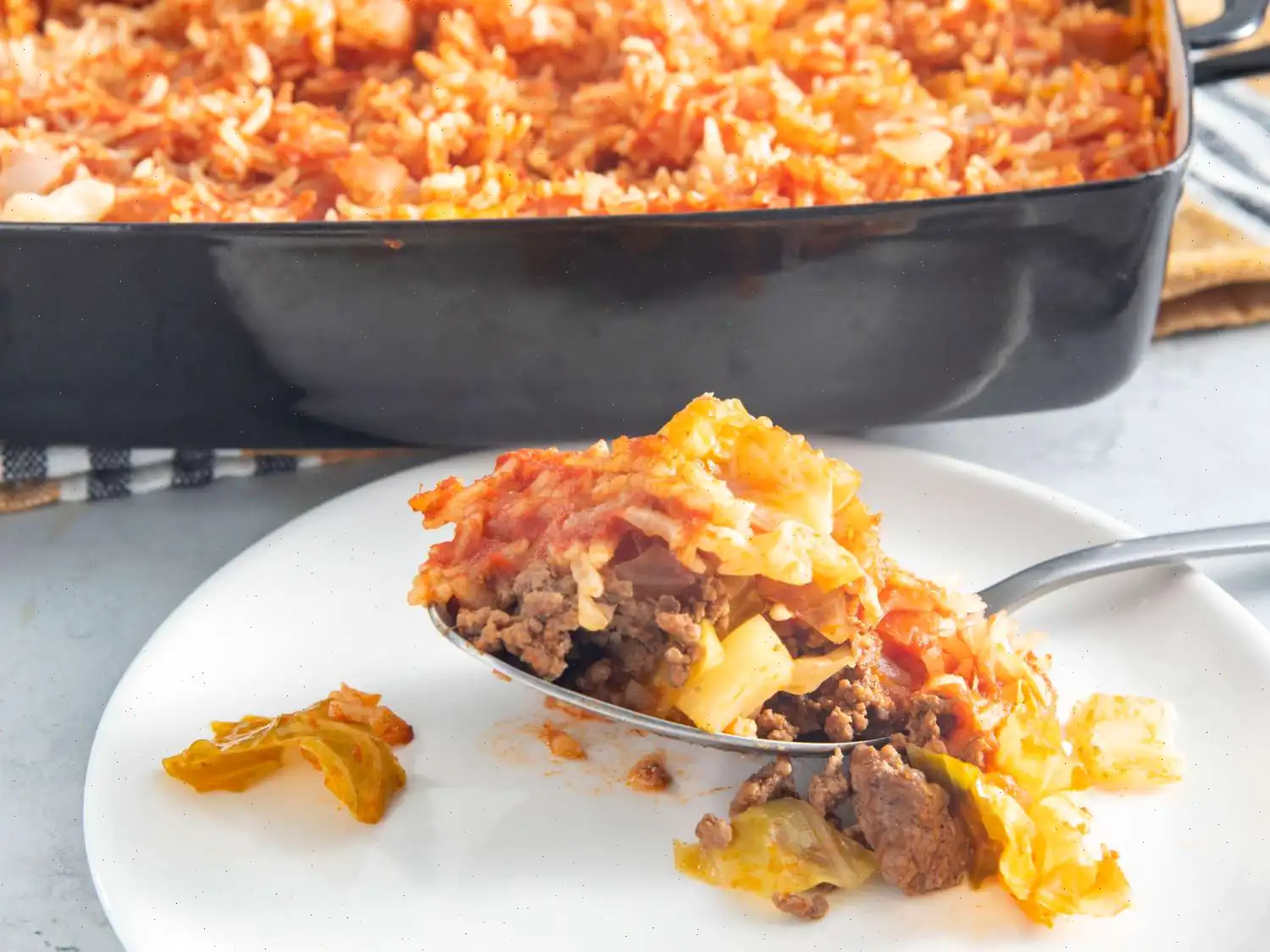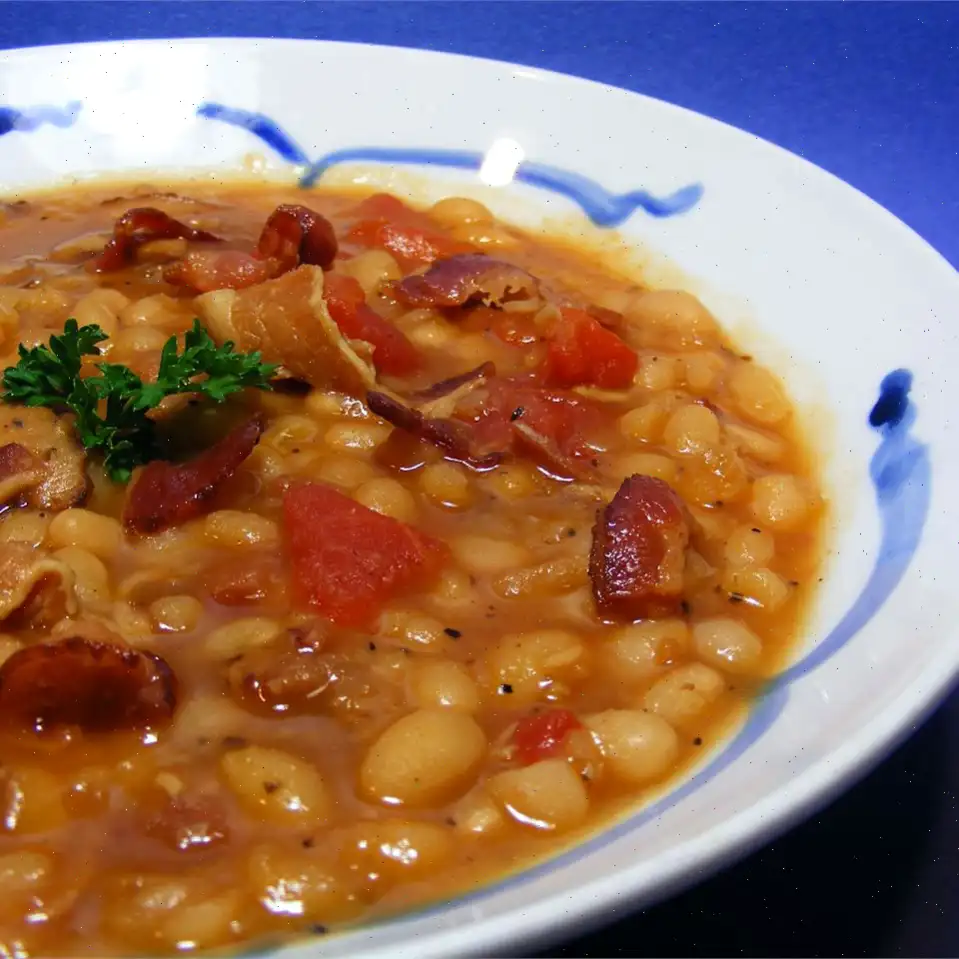
Sauerbraten IV Recipe
Ingredients
This recipe was developed at its original yield. Ingredient amounts are automatically adjusted, but cooking times and steps remain unchanged. Note that not all recipes scale perfectly.
Original recipe (1X) yields 8 servings
- 1 cups red wine vinegar
- cup dry red wine
- 2 onions, sliced
- 2 carrots, sliced
- 1 bay leaf
- 1 teaspoon whole allspice
- 3 whole cloves
- 1 tablespoon black peppercorns
- 1 tablespoon salt
- 4 pounds rump roast
- cup butter
- 1 tablespoon vegetable oil
- 5 tablespoons all-purpose flour
- 1 tablespoon white sugar
- cup crushed gingersnap cookies
Directions
Step 1: In a large non-metal bowl, combine red wine vinegar, red wine, onions, carrots, bay leaf, whole allspice, whole cloves, peppercorns, and salt.
Step 2: Place the roast in the marinade, cover, and refrigerate for 3 days, turning the meat once daily to ensure even marination.
Step 3: After 3 days, remove the roast from the marinade and wipe it dry with paper towels.
Step 4: In a large saucepan, heat the marinade over medium-low heat, letting it warm up for a few minutes.
Step 5: In a Dutch oven, melt cup butter with the vegetable oil over medium heat. Brown the beef on all sides, sprinkling the flour over the meat as you turn it.
Step 6: Once browned, pour the heated marinade into the Dutch oven with the roast. Cover, reduce the heat to low, and let it simmer for 3 hours, or until the beef is tender.
Step 7: After 3 hours, remove the roast from the Dutch oven. Discard the marinade, skim off any excess fat, and strain the liquid.
Step 8: In a large skillet, melt the remaining cup butter over low heat. Add the sugar and cook, stirring continuously, until the mixture turns golden brown.
Step 9: Slowly pour in the strained marinade, stirring constantly until the sauce is smooth and thickened.
Step 10: Stir in the crushed gingersnap cookies and continue stirring until fully incorporated.
Step 11: Pour the prepared sauce over the roast in the Dutch oven, then return the pot to low heat. Let it simmer for another 30 minutes to allow the flavors to meld.
Step 12: After 30 minutes, serve the roast with the rich, flavorful sauce.
Nutrition Facts (per serving)
| Nutrient | Amount | % Daily Value* |
|---|---|---|
| Calories | 715 | - |
| Total Fat | 48g | 61% |
| Saturated Fat | 21g | 104% |
| Cholesterol | 169mg | 56% |
| Sodium | 1148mg | 50% |
| Total Carbohydrate | 21g | 8% |
| Dietary Fiber | 1g | 5% |
| Total Sugars | 7g | - |
| Protein | 46g | 93% |
| Vitamin C | 2mg | 2% |
| Calcium | 35mg | 3% |
| Iron | 4mg | 23% |
| Potassium | 930mg | 20% |
* Percent Daily Values are based on a 2,000 calorie diet. Your daily values may be higher or lower depending on your calorie needs.
Sauerbraten is a traditional German dish that has been enjoyed for centuries, and its origins are as rich as the flavor of the dish itself. It is a pot roast made by marinating beef in a mixture of vinegar, wine, and spices for several days, before slow-cooking the meat until tender. Sauerbraten has become a staple in German cuisine, loved for its deep, tangy flavor and the tender texture of the meat.
History of Sauerbraten
The roots of Sauerbraten trace back to the Middle Ages. While the exact origins are disputed, it is believed to have emerged in the central regions of Germany. The word "sauer" means "sour" in German, which refers to the acidic marinade that tenderizes the meat. Over the centuries, different regions in Germany developed their own variations of Sauerbraten, each putting a unique twist on the dish. Some regions use different types of meat such as pork or lamb, while others may adjust the marinade ingredients to suit local tastes.
Regional Variations
In Germany, Sauerbraten is enjoyed in a variety of ways depending on the region. For example, in the Rhineland, the dish is often made with a mixture of vinegar and sugar, creating a sweeter sauce. In Franconia, the marinade might include wine or beer. Additionally, some areas, like the Swabian region, serve Sauerbraten with a rich gravy and egg noodles (Spaetzle), while others might pair it with dumplings or mashed potatoes. The addition of gingersnap cookies, as seen in the "Sauerbraten IV" recipe, is a feature more commonly found in the Rhineland version, offering a unique balance of sweet and sour flavors.
How Sauerbraten Differs from Other Similar Dishes
Though Sauerbraten shares some similarities with other pot roast dishes, it stands apart because of its distinctive marinating process. Unlike most pot roasts, which are simply seasoned and roasted, Sauerbraten requires several days of marinating in vinegar and wine, allowing the meat to absorb a tangy flavor and become exceptionally tender. This acidic marinade is not only a flavor enhancer but also helps break down the tougher fibers of the meat. Additionally, the use of gingersnap cookies in the sauce provides a unique depth of flavor not found in other braised meat dishes.
Where Sauerbraten is Served
Sauerbraten is often served at festive occasions such as family gatherings, holidays, and especially during Oktoberfest celebrations. It is a dish that is hearty and satisfying, perfect for feeding a crowd. While it can be found in many German restaurants around the world, particularly in areas with a strong German heritage, it is also commonly prepared at home for special occasions. The dish is typically paired with traditional sides like red cabbage, spaetzle, boiled potatoes, or potato pancakes, making for a truly comforting meal.
Interesting Facts About Sauerbraten
Did you know that Sauerbraten is sometimes called "German pot roast" in English-speaking countries? Despite its name, the dish has a much more complex flavor profile, with the marination process creating a balance of sour, savory, and slightly sweet notes. Another interesting fact is that Sauerbraten is one of the oldest known German dishes, and it has been passed down through generations, with each family adding their personal touch to the recipe.
Another fun tidbit is that Sauerbraten, due to its lengthy marination process, was historically considered a dish to prepare for large gatherings, as it allowed the cook to prepare it in advance. In fact, it was often marinated for a full week before being cooked, ensuring the flavors were well-infused. Today, its not uncommon for home cooks to marinate it for 3-4 days, but the long wait is definitely worth the final product!
FAQ about Sauerbraten IV Recipe
Comments
Ryan Cruz
03/18/2024 11:22:31 PM
Absolutely amazing! I was really craving sauerbraten and chose to try this recipe. Both my husband and I were thrilled with the results! I was a bit hesitant about using gingersnaps, but they truly elevated the dish. The meat was incredibly tender and the sauce was simply delicious. I'll definitely be sharing this recipe with my loved ones. I suggest serving it with potato pancakes topped with applesauce and sour cream, along with some red cabbage. Thank you for this wonderful experience!
Sharon Jackson
05/31/2023 08:43:54 AM
Marinated the beef for 3 days in a ziptop bag with a large onion. I used the crockpot for cooking the beef, then made the gravy in a skillet and added it back to the crockpot. Don't forget to add the gingersnaps - I crushed 12 smallish ones to make 2/3 cup. The sauerbraten was still a bit tart for my liking, so I added 2 more tablespoons of sugar to balance it out, making it just right for us - a solid 4+. Cooking on low for 4-5 hours would have been sufficient. I served it with spaetzle, applesauce, and sweet and sour red cabbage. Overall, using the crockpot for cooking the beef worked out great.
Charles Ramirez
05/20/2023 01:46:42 AM
I prepared this dish for an Oktoberfest gathering, and it was a huge hit! My husband, who is German, walked in and exclaimed that it smelled just like Deutchland. That's when I knew I was on the right track. Once the guests arrived, it disappeared in no time, and they're already asking me to make it again soon. I slow-cooked it for 4 hours on low, and the result was fantastic! The only downside was that there wasn't enough to go around!
Adam Williams
08/02/2023 02:14:06 PM
My father, who was German, used to make this dish frequently. This recipe closely resembles his, with the addition of one sliced lemon in the marinade.
Rebecca Parker
10/18/2022 09:47:03 PM
I have been using this recipe for many years, and it is a hit with the whole family!
Justin Jones
06/05/2023 10:22:14 AM
I absolutely love the gingersnap flavor! Give it a try, my whole family enjoys sauerbrautin, even the young grandkids!








